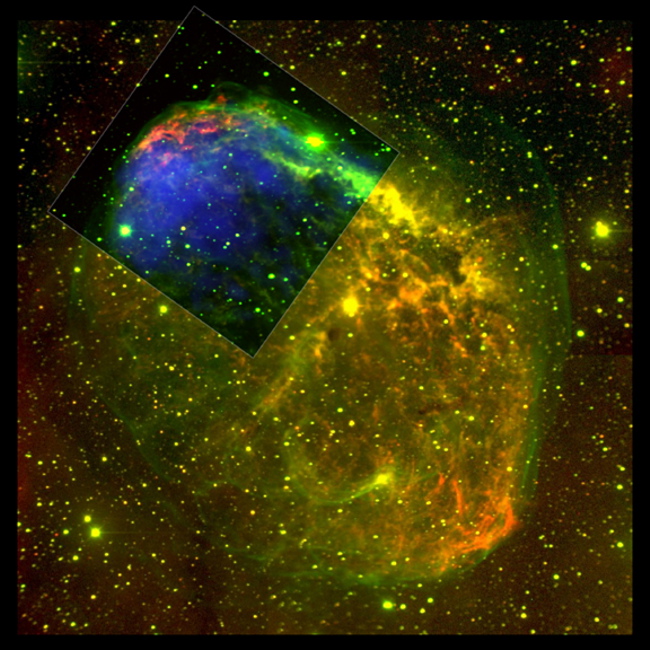
 Credit: X-ray: NASA/UIUC/Y. Chu & R. Gruendl et al.; Optical: SDSU/MLO/Y. Chu et al.
Credit: X-ray: NASA/UIUC/Y. Chu & R. Gruendl et al.; Optical: SDSU/MLO/Y. Chu et al.
Stellar Epochs: Shocking Revelations
Very massive stars blow themselves apart. These stars are so bright the pressure of their radiation exerts such a force on material in the star's atmosphere the atmosphere is driven from the star. Such stars go through a number of stages on their way to exploding as supernovae and forming neutron stars or black holes: a period when mass loss is rather stable, a short period of giant eruptions of mass from the star, and a somewhat longer stage after that of large-scale, stable mass loss that's so powerful astrophysicists are not even sure how it's possible. Astronomers can see the remnants of these stages in the nebulae surrounding these old massive stars. One extremely beautiful case is the nebula NGC 6888, the Crescent Nebula, which surrounds an evolved massive star called HD 192163. This nebula is shown in the image above, which is a composite image showing the optical emission from the nebula and (in blue) X-ray emission from one region of the nebula. The star (seen as the bright point near the center of the image) erupted about 400,000 years ago, creating the optical nebula. About 200,000 years after that, a fast-moving wind began to blow from the star's surface, eventually overtaking the previously ejected matter and forming a strong shocked region of X-ray emitting gas.
Last Week *
HEA Dictionary * Archive
* Search HEAPOW
* Education
Each week the HEASARC
brings you new, exciting and beautiful images from X-ray and Gamma ray
astronomy. Check back each week and be sure to check out the HEAPOW archive!
Page Author: Dr. Michael F. Corcoran
Last modified Monday, 26-Feb-2024 17:46:23 EST


